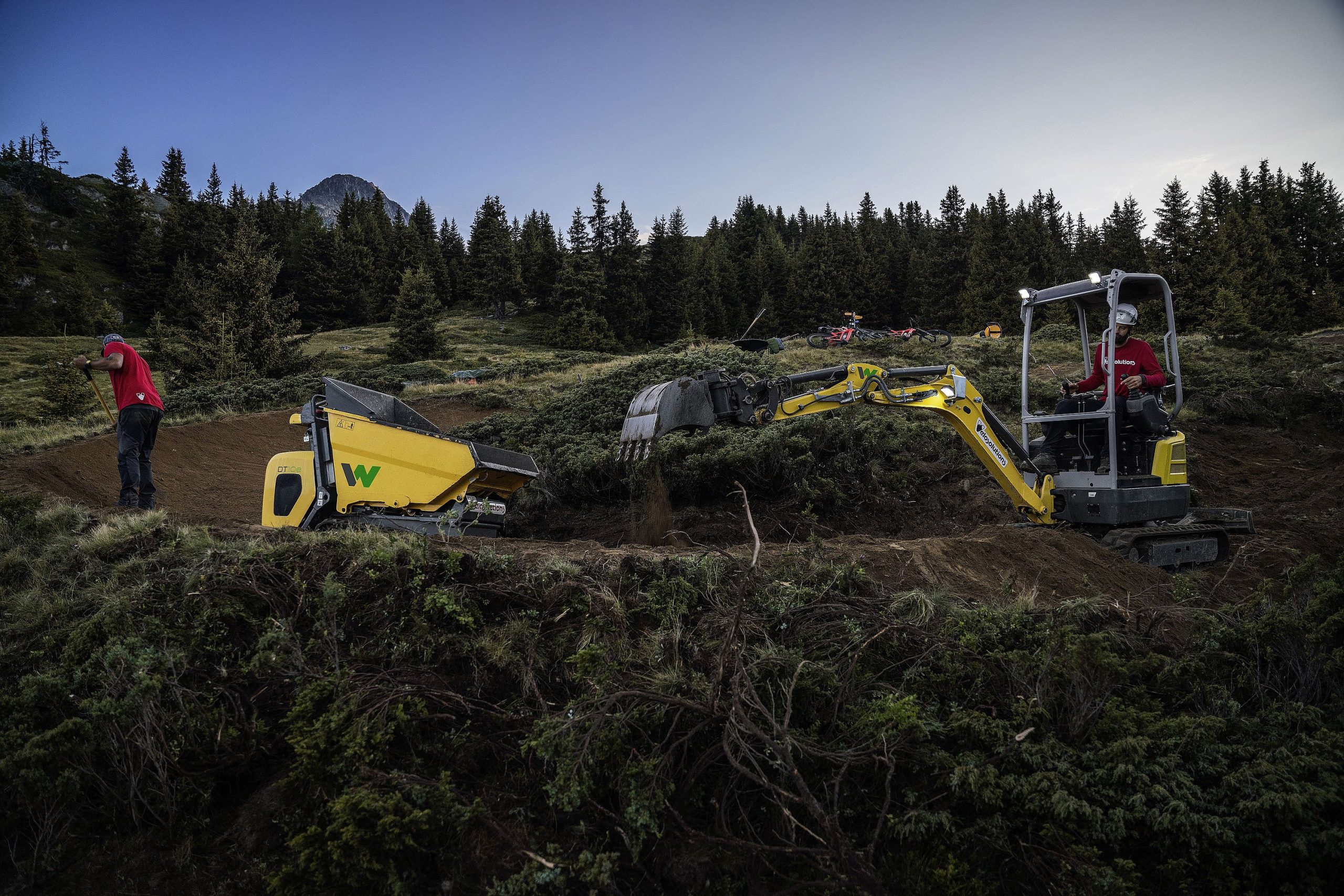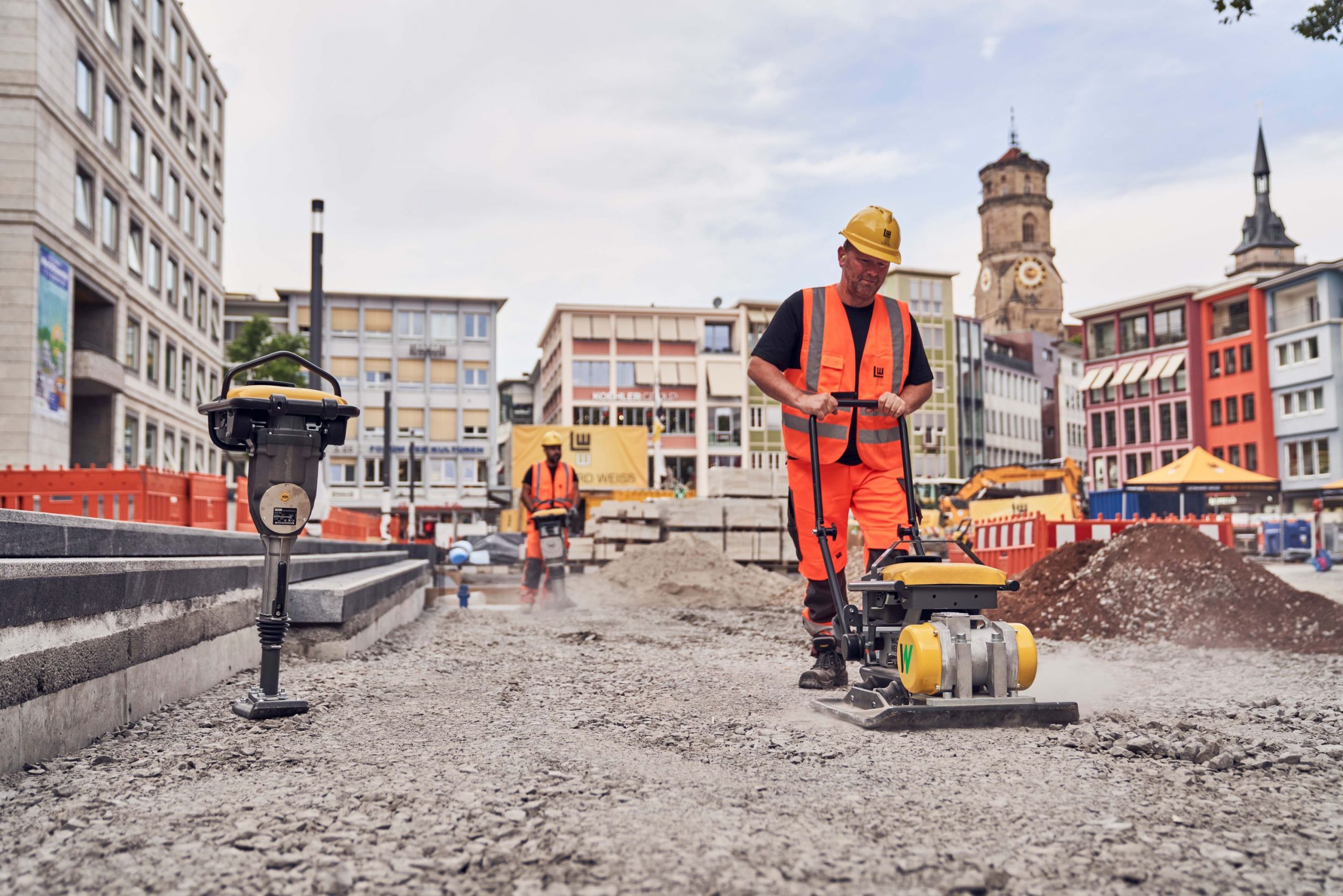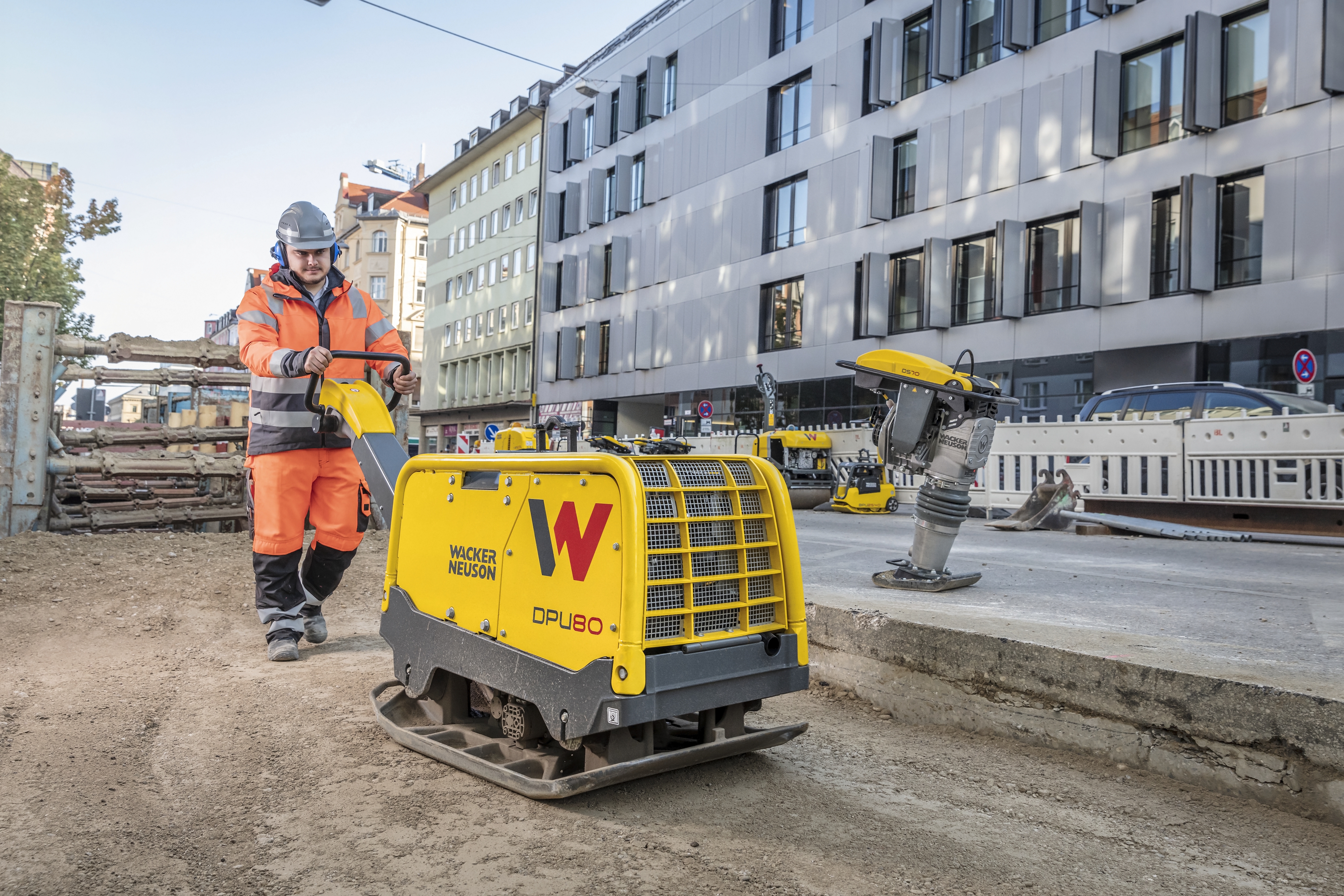Soils differ, and so do the requirements in soil compaction. The question is: which vibratory plate do I use for which purpose? Should it be remote-controlled? Equipped with forward travel or also reversing functions? To be well-equipped for the next application, here you’ll find an overview of the wide range of models by Wacker Neuson: from small to large vibratory plates.
No matter whether it’s road or path construction or landscaping – compacting soil properly makes a reliable foundation for whatever is to be created on it. The choice of vibratory plate should be well thought-out to ensure this base is appropriately durable and sturdy. Here, it’s not just the size of the area to be compacted that is crucial, but also the desired operating comfort and type of soil. Generally, the following applies: the smaller vibratory plates up to 200 kilograms are applied mainly in lighter compaction work; the heavier ones over 200 kg are particularly suitable for compacting large areas. Compaction performance is specified in kilonewtons (kN).
Table of contents:
All vibratory plates at a glance
Forward-traveling vibratory plates: for light soil compaction
Electric vibratory plates: work emission-free
Reversible vibratory plates: back and forth flexibly
Remote-controlled vibratory plates: relaxed and safe compacting
Concentrated power with coupling set: extreme operating width when compacting
Conclusion: which vibratory plate for which purpose?
All vibratory plates at a glance:
which vibratory plate for which purpose? Here, you’ll find an overview of the characteristics of the different models:
| Forward-traveling vibratory plate | Electric vibratory plate | Reversible vibratory plate | Remote-controlled vibratory plate | Coupling set |
|---|---|---|---|---|
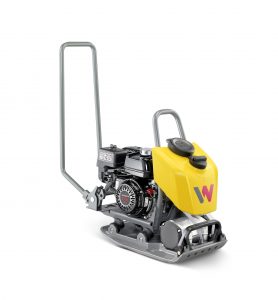 |
 |
 |
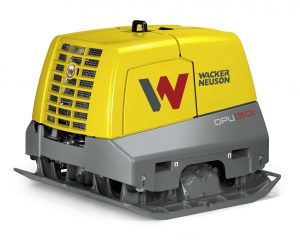 |
 |
|
|
|
|
|
Forward-traveling vibratory plates: for light soil compaction
The forward-traveling vibratory plate is small and maneuverable. Thus, it is perfect for use in compacting smaller areas. Fresh asphalt, paving stones and mixed soil are its preferred areas of application. Some models by Wacker Neuson are equipped with a water tank and sprinkling set for asphalt compaction. The maneuverability of the forward-traveling vibratory plates makes them easy to control and maneuver. In addition, they are easy to operate and leave no prints in the asphalt.

For more flexibility in application – forward-traveling vibratory plates
Electric vibratory plates: work emission-free
In the product range of the single direction vibratory plates, besides gasoline and diesel-powered vibratory plates, there are also models from the zero emission series with battery operated electric motors. These make emission-free work possible and are particularly low-maintenance. Their battery-powered and thus cable-free application make them flexible in use and are in no way inferior to conventional vibratory plates. To the question “Which vibratory plate for which purpose?”, the answer here is: battery-powered vibratory plates are ideal for soil compaction in sensitive environments or in trenches.

Battery-powered vibratory plate for emission-free compacting.
Reversible vibratory plates: back and forth flexibly
These vibratory plates can go forward and in reverse and also have on the spot compaction. Changing the travel direction is infinitely variable without having to change the rpm of the motor. Reversible vibratory plates are – depending on weight – suitable for smaller, but also for major construction applications. The bandwidth of the model range extends from a 90-kilogram light vibratory plate to the strongest vibratory plate in the world, the model DPU130r, with a centrifugal force of 130 kilonewtons. With the various application weights, every subbase – whether it’s asphalt, soil or paving stones – can be adequately compacted. Heavy-duty vibratory plates can also be used as trench compactors.

Reversible vibratory plate with control handle for variable forward and reverse speed.
Remote-controlled vibratory plates: relaxed and safe compacting
Vibratory plates are particularly operator-friendly, as they can be controlled remotely during soil compaction. The operator is thus protected against hand-arm vibrations, noise and dust, and can work while fully relaxed. A built-in safety feature ensures maximum safety on the construction site. If a clear line of sight between the operator and vibratory plate is interrupted, the machine stays still. Only when the connection has been reestablished can work continue.
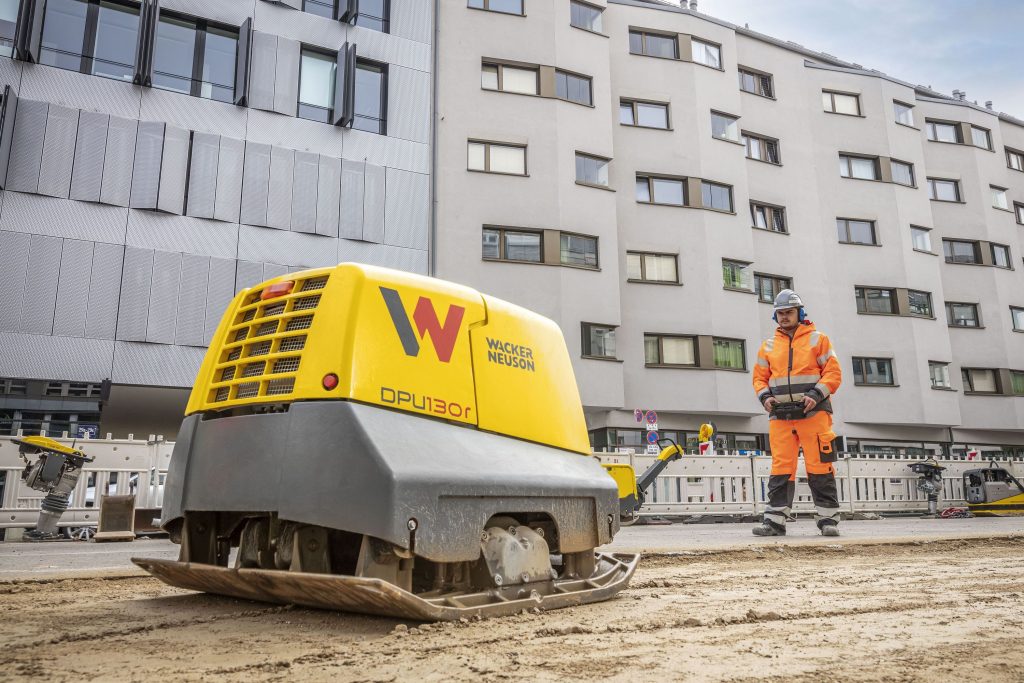
Control at a distance: The DPU130 makes comfortable working possible.
Concentrated power in the coupling set: extreme operating width when compacting
If you want to count on concentrated power when compacting, couple together three vibratory plates of the Wacker Neuson DPU110 model. The coupling set created this way attains an extreme operating width of three meters when compacting soil and can compact more than 4,300 square meters per hour. Especially in railway construction, this triple combination is often used for crushed stone compaction. It is light enough so that it doesn’t sink into the track bed, completing compaction in a few passes. In a few simple steps, the vibratory plates can be uncoupled again accordingly for individual use.

For concentrated power in compaction: three coupled vibratory plates.
Conclusion: which vibratory plate for which purpose?
Before soil compaction, the purpose, the composition of the soil and the compaction performance required should be determined. Those with less experience should seek out advice or watch our instructional video:
Instructional video for vibratory plates DPU80(r), DPU90 and DPU110(r):
Wacker Neuson is proud to be a global brand. Products and services vary from country to country and may not be available in your local market.
We would be pleased if you share our article or leave us a comment!


